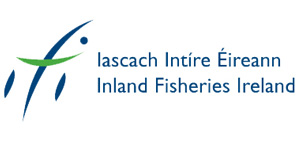Fish Stock Survey of Lough Lene, October 2022
Lough Lene is a limestone lake, situated in the Upper Boyne catchment in Co. Westmeath (Plate 1.1, Figure 1.1). It is located approximately 1km north of Collinstown and 4km north-east of Castlepollard. The lake has a surface area of 416.5ha, a mean depth >4m, a maximum depth of 20m and falls into typology class 8 (as designated by the EPA for the Water Framework Directive), i.e., deep (>4m), greater than 50ha and moderately alkaline (20-100mg/l CaCO3).
Lough Lene is a clear, hard-water lake with areas of marl deposits. The lake supports a range of pondweed species (NPWS, 2013). A variety of stoneworts, indicators of marl or hard water lakes, are also present. Areas of woodland found along the shore include willows (Salix spp.), birch (Betula sp.) and alder (Alnus glutinosa) (NPWS, 2013). Bird species found along the shores of Lough Lene include mute swan (Cygnus olor), teal (Anas crecca), pochard (Aythya ferina), great-crested grebe (Podiceps cristatus), little grebe (Tachybaptus ruficollis), tufted duck (Aythya fuligula), grey heron (Ardea cinerea), water rail (Rallus aquaticus), mallard (Anas platyrhynchos), golden eye (Bucephala clangula), cormorant (Phalacrocorax carbo) and wigeon (Anas penelope) (NPWS, 2013).
The lake largely forms the Lough Lene SAC and qualifying interests include hard oligo-mesotrophic waters with benthic vegetation of Chara spp. and white clawed crayfish (Austropotamobius pallipes) (NPWS, 2021). In 1986 the white clawed crayfish was declared extinct from the lake due to an infestation of the fungal plague, Aphanomyces astaci (NPWS, 2013). Crayfish were reintroduced following their eradication; however, the plague reoccurred, leading to a second extinction (NPWS, 2013). While the current status is unclear (NPWS 2021) crayfish were observed during a fish stock survey of the lake in 2016 (IFI unpublished data) The lake is stocked several times annually by the Lough Lene Anglers Association with both brown and rainbow trout of catchable size (c. 40cm and larger) and it is a popular boat angling fishery. Lough Lene was previously surveyed in 2007, 2010, 2013 and 2016 as part of the WFD surveillance monitoring programme (Kelly and Connor, 2007 and Kelly et al., 2011, 2014 and 2017). Perch were found to be the dominant species present in the lake in all previous surveys.
This report summarises the results of the 2022 fish stock survey carried out on the lake using Inland Fisheries Ireland’s fish in lakes monitoring protocol. The protocol is WFD compliant and provides insight into fish stock status in the lake.
Topics: Lake Surveys 2022 , Lough Lene |
